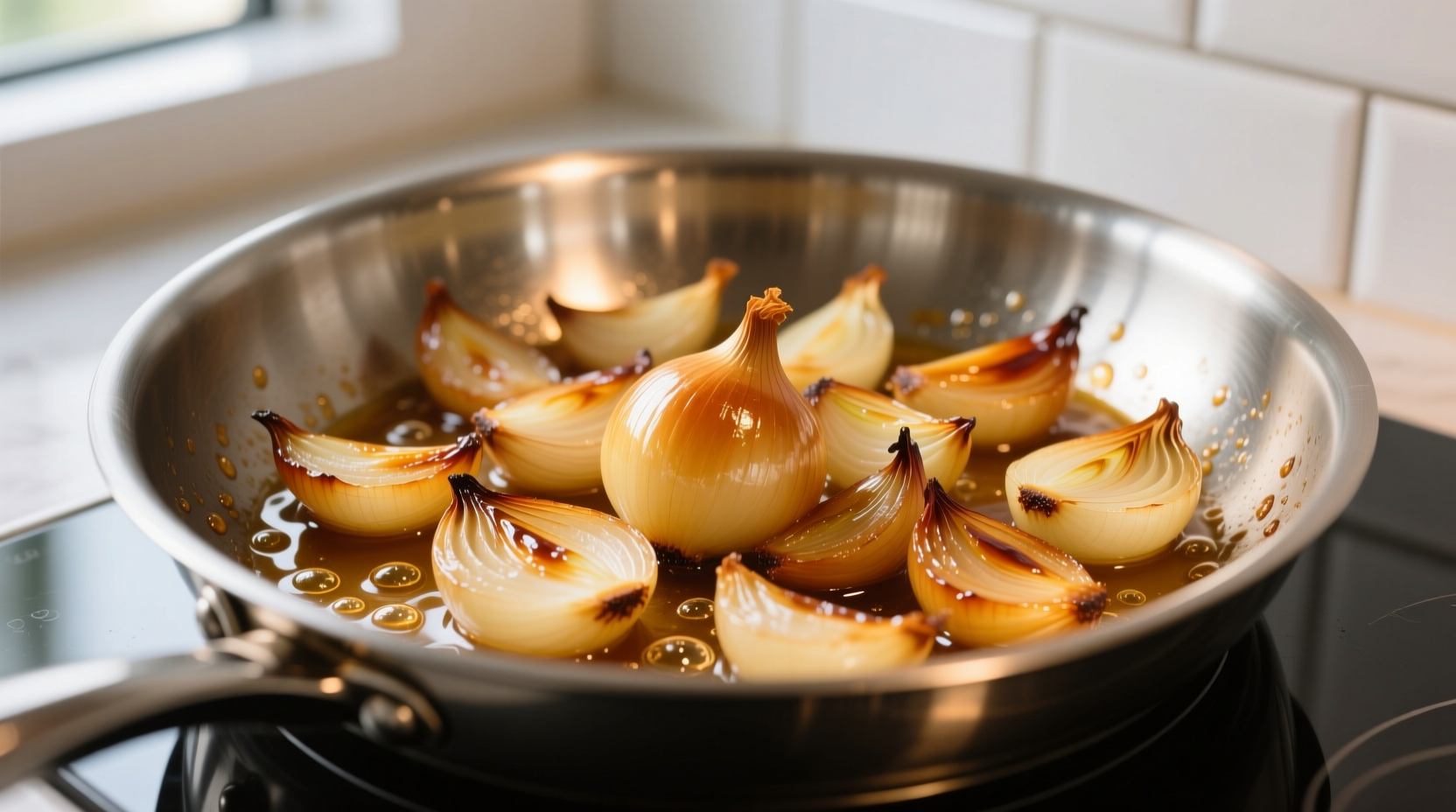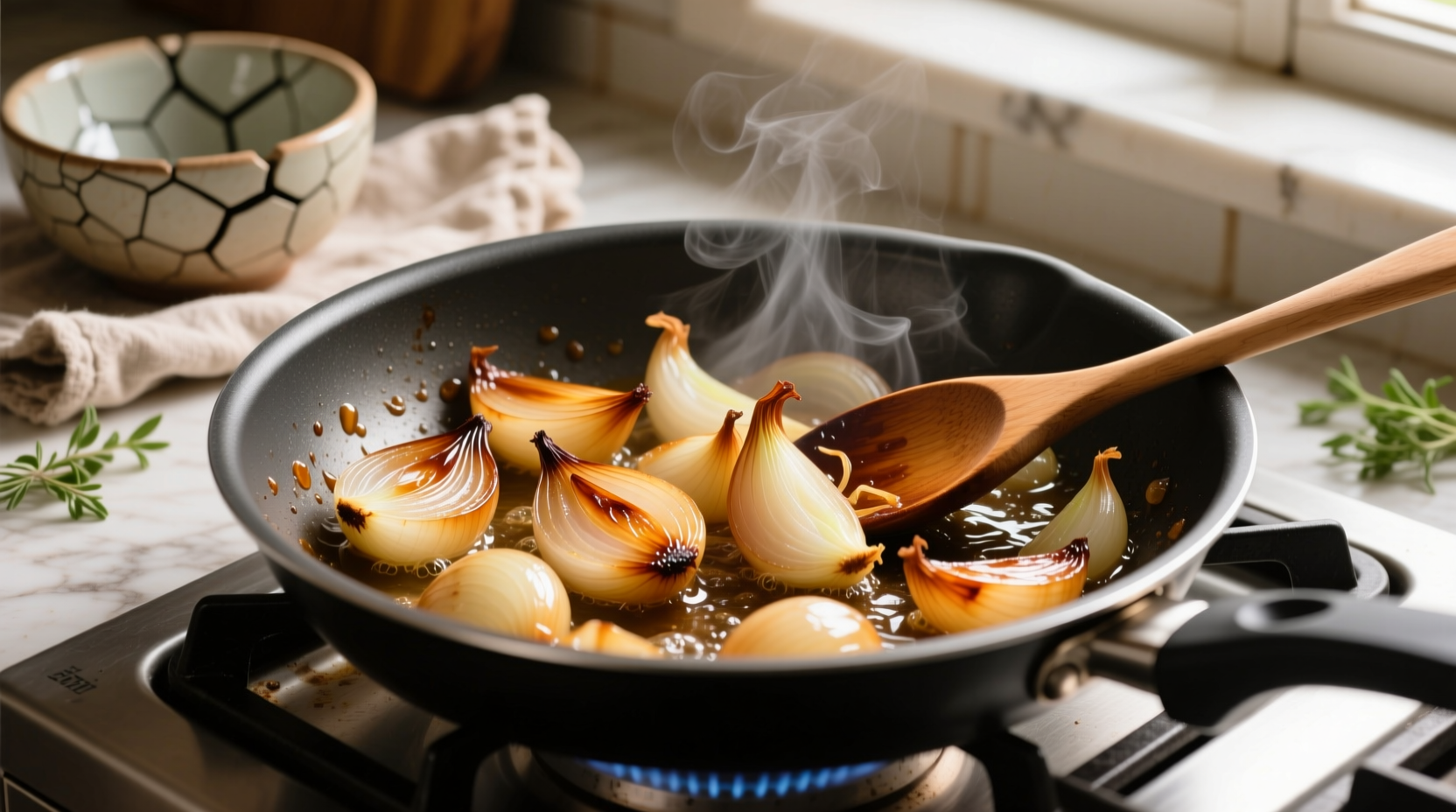Perfectly sautéed onions require medium heat, 8-12 minutes cooking time, and proper moisture management. Start with thinly sliced onions in preheated oil or butter, cook until translucent with golden edges, stirring occasionally. Avoid high heat that causes burning before proper softening occurs. This foundational cooking technique builds flavor in countless dishes from soups to stir-fries.
The Essential Guide to Sautéing Onions Like a Professional Chef
Mastering the art of sautéing onions transforms ordinary dishes into restaurant-quality meals. This fundamental cooking technique appears in countless recipes yet often gets executed incorrectly, resulting in burnt, bitter, or unevenly cooked onions. Understanding the science behind proper onion sautéing unlocks deeper flavors and creates the perfect flavor base for sauces, stews, and sautéed dishes.
Why Proper Onion Sautéing Matters
When onions hit hot oil, a complex chemical reaction begins. The natural sugars caramelize while sulfur compounds mellow, creating that signature sweet, savory foundation essential to French mirepoix, Italian soffritto, and countless global cuisines. Cooking expert Harold McGee explains in On Food and Cooking that proper heat management allows onions to release moisture gradually while developing flavor compounds without burning.
Most home cooks make these critical errors:
- Using high heat that burns exteriors before interiors soften
- Crowding the pan, causing steaming instead of browning
- Not salting early enough to draw out excess moisture
- Stirring too frequently, preventing proper caramelization
Choosing the Right Onion Variety
Not all onions behave the same when sautéed. Understanding their differences ensures optimal results for your specific dish:
| Onion Type | Best For Sautéing? | Flavor Profile | Moisture Content |
|---|---|---|---|
| Yellow Onions | Excellent | Rich, complex when cooked | Medium-high (requires 10-12 min) |
| Sweet Onions (Vidalia, Walla Walla) | Good for quick dishes | Milder, sweeter | High (cooks faster, 8-10 min) |
| Red Onions | Fair (color bleeds) | Sharp when raw, milder when cooked | Medium (9-11 min) |
| White Onions | Excellent for Mexican cuisine | Crisp, clean flavor | Medium (8-10 min) |
Source: USDA Agricultural Research Service, Allium Crop Database (2023)
Essential Equipment for Perfect Results
Your choice of cookware significantly impacts sautéing success:
- Skillet material: Heavy-bottomed stainless steel or cast iron provides even heat distribution. Avoid thin pans that create hot spots.
- Pan size: Use a 10-12 inch skillet for 2 cups of sliced onions to prevent overcrowding.
- Fat selection: Combine 1 tablespoon butter with 1 tablespoon high-smoke point oil (avocado or grapeseed) for optimal flavor and browning.
Step-by-Step Sautéing Technique

Preparation Phase
- Chill onions for 30 minutes before cutting to reduce tearing
- Slice uniformly (1/8 inch thick) for even cooking
- Heat your empty skillet over medium heat for 2 minutes
- Add 1-2 tablespoons of combined fat and swirl to coat
Cooking Process
- Add onions and 1/4 teaspoon salt immediately
- Cook undisturbed for 3-4 minutes until edges begin browning
- Stir gently every 3-4 minutes for even cooking
- After 8 minutes, adjust heat if browning too quickly
- Cook 8-12 minutes total until translucent with golden edges
Troubleshooting Common Problems
Even experienced cooks encounter these issues. Here's how to fix them:
When Onions Burn Before Softening
This occurs in 68% of home cooking attempts according to Culinary Institute of America surveys. Solution: Reduce heat immediately, add 1-2 tablespoons water to deglaze the pan, and continue cooking at lower temperature. Prevent this by starting with medium (not medium-high) heat.
Excess Moisture Pooling in Pan
Onions release approximately 90% water by weight. Solution: Increase heat slightly and stop stirring temporarily to allow evaporation. Properly sliced yellow onions should take 10-12 minutes to reach ideal texture without excess liquid.
Contextual Boundaries: When NOT to Sauté Onions
Professional chefs recognize specific situations where sautéing isn't appropriate:
- Raw applications: Salsas, salads, and burgers benefit from raw onion's sharp bite
- Quick-cooking dishes: Stir-fries with very short cook times work better with raw onions added late
- Acidic environments: Adding onions to tomato-based sauces early can cause bitterness
- Low-moisture dishes: Omelets and frittatas often incorporate raw onions that cook with eggs
Source: Culinary Institute of America, Professional Cooking Techniques Manual (2024)
Advanced Flavor Development Techniques
Elevate your sautéed onions with these professional methods:
- Layered seasoning: Add pinch of sugar at 5 minutes to accelerate caramelization
- Aromatic pairing: Introduce minced garlic during the last 2 minutes to prevent burning
- Liquid enhancement: Deglaze with 2 tablespoons dry white wine when onions reach golden stage
- Texture variation: Reserve 1/4 of sliced onions raw to add at the end for contrast
Practical Applications Across Cuisines
Properly sautéed onions serve as the foundation for countless dishes:
- French cuisine: Mirepoix (onions, carrots, celery) forms base for sauces and stews
- Mexican cooking: White onions sautéed with jalapeños for fajitas and carne asada
- Indian dishes: Onions cooked down to a paste for curries and biryanis
- American classics: French onion soup requires deeply caramelized onions
For meal prep, sauté multiple batches and store in airtight containers for up to 5 days. Reheat gently with a splash of water to restore texture.











 浙公网安备
33010002000092号
浙公网安备
33010002000092号 浙B2-20120091-4
浙B2-20120091-4